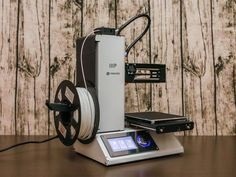3-D printers are not commonplace in every household as of yet, unlike regular inkjet printers. 3-D printing remains a very fascinating and unfamiliar phenomenon for many. So how exactly does 3-D printing work? It involves a process of layering materials. These materials can be plastics or bio-materials.
They range in rigidity and color. The decision on what material is to be used can be based on the functionality of the final product. The process requires additive manufacturing with computer-aided design (CAD) to create a precise object from scratch.
Another method used in 3-D printing is slicing. It is a reductive form of manufacturing. It cuts down and removes material from a block of material. It is much like conventional sculpting. The slicing method has less functionality compared to the layering method, however, it can prove useful as well.
3-D printing has applications in vast fields. We are going to discuss a few very cool applications of 3-D printing. These examples may not be very widespread today, but their future is extremely promising. All we need is 3-dimensional modeling software and a very precise machine.
3-D Printed Food!
Seems quite unbelievable right? Something right out of a sci-fi cartoon show? Well, it is possible! If pureed food material is used as material for the printer, layering allows the printer to recreate foods like chicken and bread. Is the food safe to eat? Absolutely! As long as the printer is thoroughly cleaned, and the pureed food material is not contaminated, the printed food is completely safe.
Housing
Unexpected, right? But it is actually being done. 3-D software modeling already had a lot of functionality in the field of architecture. Now, complex architectural designs are actually being 3-D printed and installed in client houses. In the future, budget housing schemes for the underprivileged can be cost-effectively conducted on a large scale. This manner is also waste-free!
Medical Applications
3-D printing has an unbelievable amount of scope within the field of medicine. Most recently, during the Covid-19 pandemic, there was an extreme shortage of ventilators worldwide. 3-D printers came to the rescue. Even high school kids with access to 3-D printers dedicated their machines to printing spare parts of ventilators for assembly. This instant mass-production and quick response were only possible due to the technological advancements in 3-D printing.
Prosthetic limbs have been made through 3-D printing for quite a while. This manufacturing process is relatively cheap. It gives accident victims and children born with birth defects a little extra help. In addition to prosthetic limbs, organs like the liver and bones can be manufactured from 3-D printing. Bones can be made from titanium to withstand the pressure of the patient’s weight.
As long as the right cell tissue is available, we will see all sorts of organs being manufactured in the future. People in need of organ transplants can benefit from this technology vastly. Burn victims can even have skin printed and special protein bandages to expedite their healing process.
Cars
The automobile industry has been exploring the potential of 3-D printing for a very long time. The amount of customization in designs through 3-D printing is extremely vast. This allows for a lot of designs to be prototyped and put into manufacturing at unprecedentedly fast speeds.
This manufacturing process has reduced the production time and costs for companies significantly, improving their profit margin while at it. Tooling, jigs, and fixtures are manufactured frequently through layering. Customized products according to the preferences of final users are possible in cars because of this technology.
Everyday Objects
Objects that we use daily are now also being produced through 3-D printing. Objects like water buckets, small jewelry, glass, and eyewear can be produced economically and with a lot of precision. Delicate jewelry can be manufactured at high speed. Eyewear can be customized to fit all face and eye shapes. Shoes and medically recommended soles are manufactured according to personal preferences and needs through 3-D printing.
Designers and the fashion industry are also accepting 3-D printers as invaluable tools. Clothes that are resistant to fire, waterproof, and bullet resistant can be made. Prototypes can be created rapidly allowing for quicker research and improvement. Companies like Fow Mould are dedicated to research and development projects for finding different applications of plastic 3-D printing.
Conclusion
We are yet to fully discover the scope of 3-D printing. It has started showing potential across industrial manufacturing, automobiles, medicine, architecture, and many more fields. The environment-friendly, waste-reductive nature of 3-D printing makes it an extremely sustainable process. Costs are minimized for businesses and profit margins become greater. It can only be expected that it will grow into even more fields.
